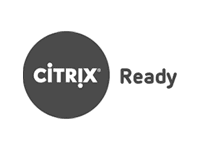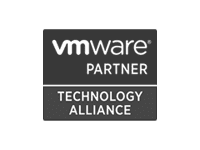You know you need to care about information technology (IT) security. And you really do. It’s high up there on your list of concerns, just after meeting payroll, acquiring new customers, serving the customers you have, and setting up your business for the next phase of its growth. The problem is that all of those critical business demands are dependent on your IT.
You issue your staff their paychecks electronically. Your repeat customers trust you with their information. Your strategy documents are stored digitally somewhere on your network. So while IT security might seem like a relatively low priority, it should actually be at the top of the list.
IT Is Both Physical and Virtual
Your first thoughts about IT security are probably about locking down your data and your apps in the cloud, or keeping your business’s online transactions secure. But dig a little deeper and look closer to home—right in your offices. Almost all of your business transactions are conducted with an IT asset—a phone, a computer, a printer, or a software application. Each of these assets represents a security risk in its own way. And IT assets tend to multiply before your very eyes. As your business grows, your staff need more computers and phones, not only those that you provide but, increasingly, their own personal IT assets that they bring to work. More software is procured. Before you know it, you have a physical and virtual ecosystem of IT assets that need to be tracked, managed, and protected as much as your ecosystem of human capital.
Case Study: Growing Business, Growing IT
When a company is young and nimble, it uses whatever tools are on hand to run the business. And these tools are highly effective to a point. Here’s the story of a firm that managed themselves so well with standard office tools like email, spreadsheets, and docs that they grew to a point where the tools themselves were too difficult to manage effectively. It was time to uplift their business processes, and that uplift wasn’t as challenging as you might expect.
With nearly two dozen offices in North America, a global transportation and logistics firm has over 400 office workers—making IT asset security a complex issue. To keep the business running, all of these assets needed to be kept in optimal working condition. They also needed to ensure that each asset had the latest security features and that their business applications were kept up to date. They did all of this by hand. Hardware and software assets were tracked and managed in a spreadsheet, leaving a lot of room for human error in tracking and maintaining these assets. This wasn’t scalable or an optimal security environment.
Solution: Bring on a Virtual IT Asset Manager
This firm needed help. So it chose LanScope Cat with centralized IT Asset Management, helping make it easier to manage all of their complex IT assets in one place. Since adopting the LanScope Cat solution, this company has centralized management and control over all laptops and devices. They are also able to ensure that their Microsoft Windows operating system and software applications are regularly patched, kept current, and secure. IT managers also get alerts when strange activity is happening on the network, like USB data sticks plugging in, the introduction of malware, or unapproved transfers of data. Long story short, their job isn’t just easier, it’s actually doable now. So much so, in 2020 they are going to adopt LanScope Cat’s mobile device support to extend their IT asset management solution across their fleet of trucks and drivers on the road.
Find a Partner
At a certain point, you can’t manage your IT assets alone. You need a partner. But it needs to be one that not only saves you time and resources but also makes you secure in ways that you couldn’t do by yourself.





